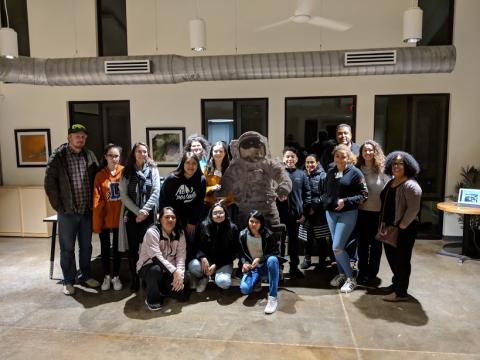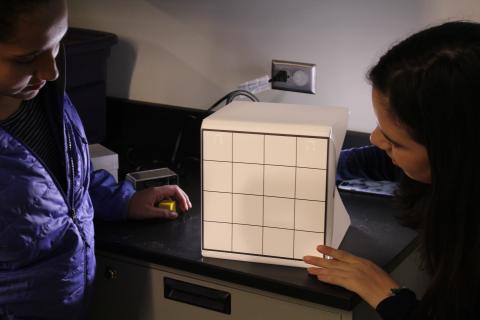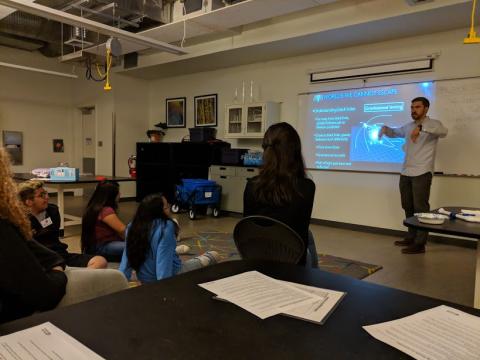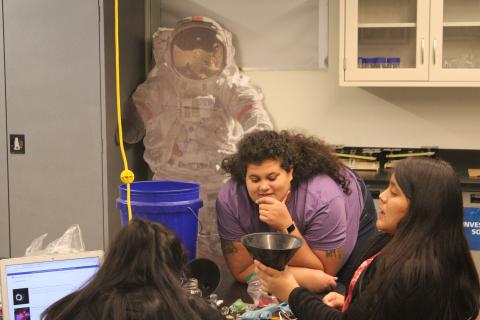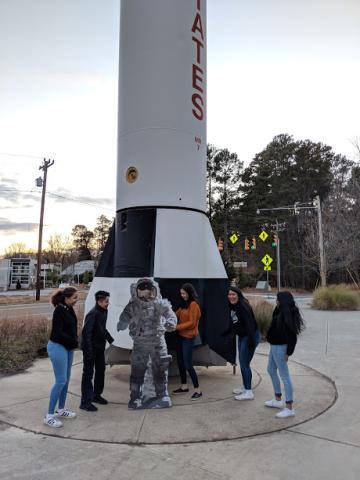In the fall of 2018, the Museum of Life and Science ran a pilot afterschool program called Teen Cosmos Collective; a series aimed at building science communication skills, space content knowledge, and science literacy and identity. This 10-week program recruited and mainly engaged teens from audiences underserved by STEM programming (young women and girls, people of color, persons with disabilities), and was generously made possible through a mini-fund from ASTC and NASA’s Universe of Learning.
The program’s practical goal was for the participating teens to build enough content knowledge, confidence, and know-how to design, fabricate, and present original facilitated and unfacilitated pop-up programs, activities, and exhibit components about deep space phenomena. Each week, participants made great use of innovative resources from Universe of Learning to help research, inform, and inspire their designs, such as Recoloring the Universe, Astropix, and Eyes on Exoplanets. They also made use of existing NISE Network materials, activities, and curriculum to help practice their skills in science communication on the floor, and as helpful reference points for what their activities might look like.
Each of the 10 sessions was 3 hours long, beginning shortly after the Museum closed so that participants had full reign over the exhibit space. All sessions were facilitated by two Museum staff, but all featured a guest speaker from the community to help set the stage for that day’s theme. The program started with a few weeks of more intensive research into deep space phenomena, with guests mainly from the astronomy field such as a Solar System Ambassador, A Hubble Fellow, and the wonderful head of the Astronomy Lab at the North Carolina Museum of Natural Sciences.
As the program progressed, and participants began dreaming of what their cumulative activities might look like, guests from local makerspaces, such as UNC BeAm and the Museum’s Making and Tinkering program came in to help shape their expectations. Participants also met and worked alongside the Museum’s Director of Learning Environments; giving them a unique window into the world of exhibit design and facilitation.
Next, participants had an opportunity to begin practicing facilitating activities on the Museum floor with visitors. This was where NISE activities really helped the teens hone their skills, as they were able to make use of the training videos and curriculum to build and develop good practices, and then get real-world experience in facilitating engaging and exciting activities like Orbiting Objects and Imagining Life.
One of my favorite moments was watching their communication skills develop as they practiced facilitating the Objects in Motion activity over the last five weeks. - Jamilia Martineau-Lopez, Teen Cosmos Collective Program Lead
The materials and support NISE provided for these activities allowed our participants to be well-prepared, confident, and comfortable in their first-ever attempt at facilitation. They were similarly useful as touchpoints later on in the design phase of their projects, as they served as a healthy framework for a project scope and scale for an informal environment like ours.
In week 10, participants invited their families and communities to our Star Party, where they had a chance to show off their own activities. The growth and skill development just in 10 short weeks was evident and inspiring.
The growth in confidence that we saw in participants was what stood out the most to me. By the end of the 10 weeks, they were excitedly stepping up for leadership roles and facilitating to their own communities. - Jamilia Martineau-Lopez, Teen Cosmos Collective Program Lead
As a facilitator and science communicator myself, I found this program to be one of the most fulfilling and heart-warming professional experiences I’ve ever had. I think it not only allowed teens to gain meaningful and impactful professional experience in science communication, but also to build practical skills and make connections that will continue to be useful to them throughout their lives.
The combination of wonderful Universe of Learning resources, with the wonderful support of NISE Net activities, made this important program possible. For that, I am extremely grateful.
For more information on the Teen Cosmos Collective please feel free to contact Max Cawley at the Museum of Life and Science

